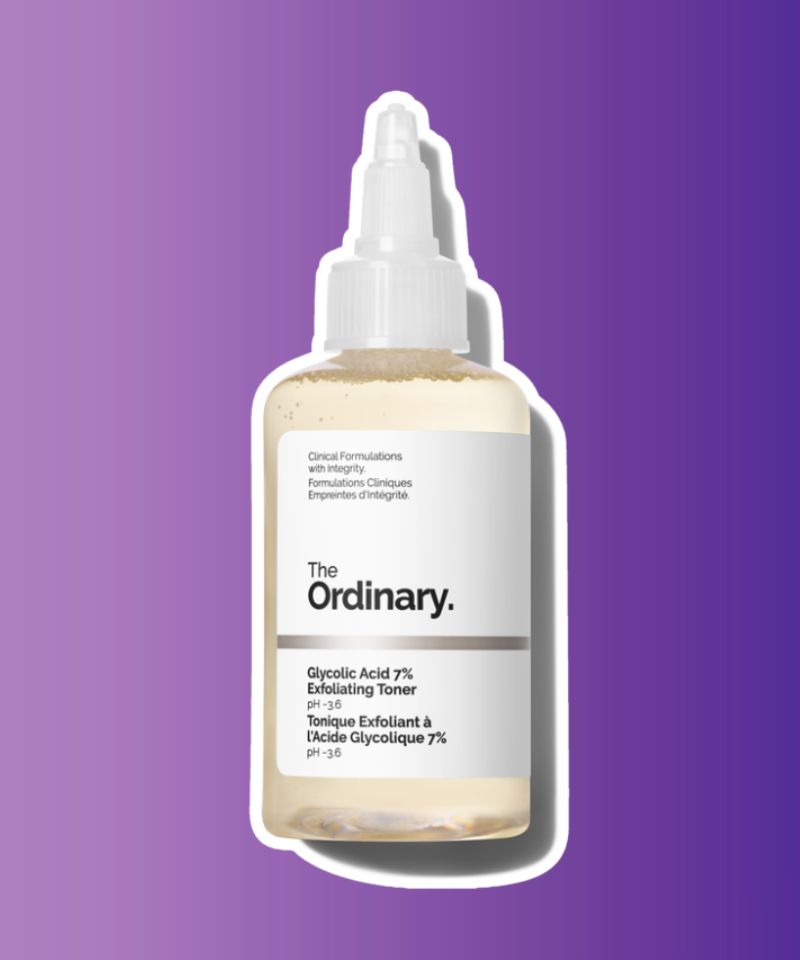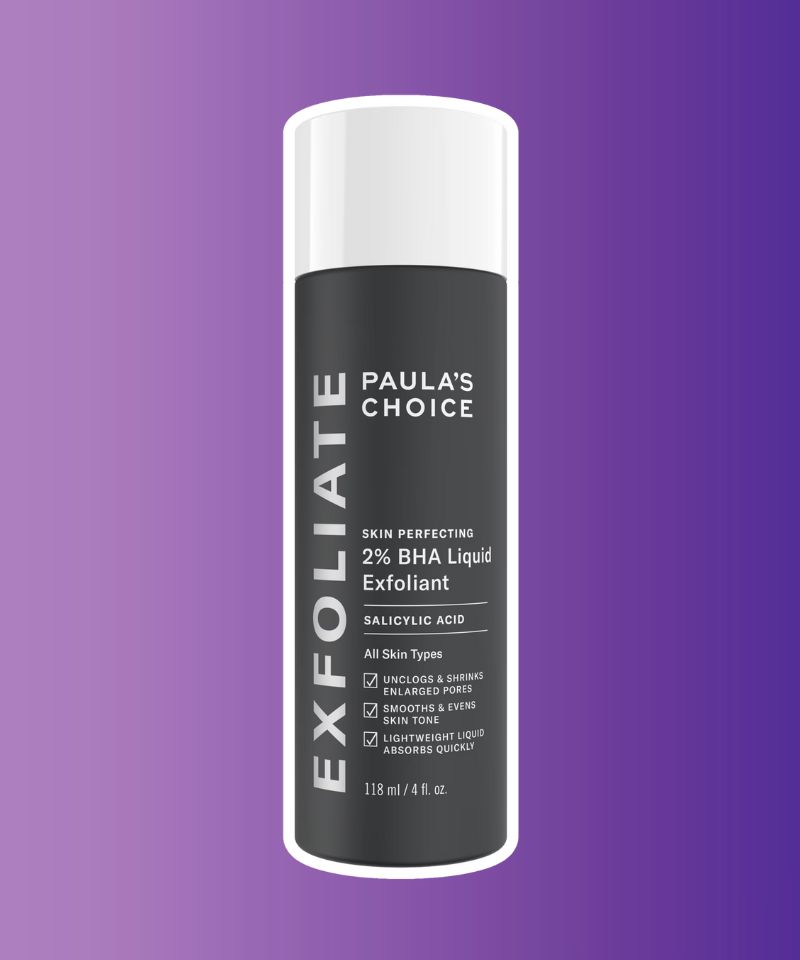Both glycolic and salicylic acids can have a transformative effect on the skin but serve different purposes and cater to various needs.
Glycolic acid, an alpha-hydroxy acid (AHA), exfoliates the skin’s surface, while salicylic acid, a beta-hydroxy acid (BHA), penetrates deeper to unclog pores and reduce inflammation.
In addition, salicylic acid is oil-soluble, making it effective for oily and acne-prone skin, while glycolic acid works best for dry or aging skin.
By understanding some of the nuances between these two powerhouse ingredients, you can learn to incorporate them into your skincare routine for maximum results and improvements in your skin’s health and appearance.
Therefore, in this article, I will dive deeper into the difference between glycolic acid and salicylic acid and explain their properties, functions, benefits, potential side effects, and ideal usage of the two ingredients, offering insights into which one might be more beneficial for various skin types and concerns.

What is Glycolic Acid?

Glycolic acid is an alpha-hydroxy acid (AHA) and a water-soluble component derived from sugar cane.
It has a small molecular size, which means it can penetrate the skin deeper and more efficiently than other water-soluble acids with larger molecular sizes, such as lactic acid.
Primarily, glycolic acid exfoliates the skin by breaking down the bonds that hold dead skin cells together, which encourages them to shed, revealing brighter, more youthful skin underneath.
The Skin Benefits of Glycolic Acid
Glycolic acid’s profound exfoliating effect leads to a myriad of skin benefits, including:
- Smoother and softer skin texture.
- Brighter complexion.
- Reduced appearance of fine lines and wrinkles.
- Improved skin tone and evenness.
- Increased collagen production, resulting in firmer, plumper skin.
The Potential Side Effects of Glycolic Acid
While glycolic acid is generally safe for most skin types, its potent exfoliating action can sometimes lead to irritation, redness, and dryness, especially in sensitive skin or when used too frequently.
Additionally, high concentrations of glycolic acid are not a suitable exfoliating option for dark skin tones as it can increase inflammation and exacerbate dark spots and uneven skin tone.
What Skin Type and Concern is Glycolic Acid Best For?
Glycolic acid is particularly beneficial for aging skin, sun-damaged skin, and those with uneven skin tone, texture irregularities, and fine lines.
However, those with sensitive skin should proceed with caution and consider lower concentrations.
How to Use Glycolic Acid?
Incorporating glycolic acid into your skincare routine should be done gradually, starting with lower concentrations and observing how your skin reacts.
Additionally, since glycolic acid is a potent exfoliating acid, it shouldn’t be used more than 2-3 times a week.
Therefore, when first introducing glycolic acid into your routine, start with a lower concentration and apply the product, such as a toner, serum, or cream, once or twice a week at night.
Additionally, since glycolic acid increases skin’s sensitivity to sunlight, applying sunscreen with high SPF during the day is crucial, even if you only use the product at night.
If your skin responds well without adverse reactions, you may increase the frequency of application.
Remember, consistency is key to seeing significant results, but overuse can lead to irritation and damage to the skin barrier.
What is Salicylic Acid?

Salicylic acid is a beta hydroxy acid (BHA) and an oil-soluble component that can cut through the oil on the skin’s surface and penetrate deeper into the pores to clear them of cellular debris.
Naturally found in willow bark, salicylic acid exfoliates the skin by breaking down the bonds between dead skin cells and dissolving excess oil, making it an effective ingredient for oily and acne-prone skin due to its ability to clear out acne-causing bacteria and reduce inflammation.
The Skin Benefits of Salicylic Acid
The primary benefits of salicylic acid include:
- Deep cleansing and unclogging of pores.
- Reduction in acne breakouts and blackheads.
- Exfoliation of dead skin cells.
- Reducing inflammation and redness associated with acne.
- Refining skin texture.
- Minimizing the appearance of enlarged pores.
The Potential Side Effects of Salicylic Acid
Though salicylic acid is generally well-tolerated, overuse or high concentrations can lead to skin dryness, peeling, and irritation, especially in sensitive or dry skin types.
Additionally, salicylic acid might not be ideal for anyone with an aspirin allergy, as they may have a similar reaction to salicylic acid.
What Skin Type and Concern is Salicylic Acid Best For?
Salicylic acid is most suitable for oily and acne-prone skin types.
Due to its ability to deep-clean pores, it’s particularly effective in addressing concerns such as blackheads, whiteheads, and other forms of acne.
How to Use Salicylic Acid?
Integrating salicylic acid into your skincare regimen offers a straightforward approach to combatting oily and acne-prone skin concerns.
Begin by applying salicylic acid once or twice a week to gauge your skin’s response.
This could be using salicylic acid in the form of a gentle cleanser, spot treatment, or a leave-on product like a toner or serum, ideally applied during your nighttime skincare routine.
Similar to glycolic acid, it’s crucial to monitor your skin for any signs of irritation or discomfort, particularly if you have sensitive or allergy-prone skin.
Gradually, you can increase the application frequency to up to three times a week as your skin builds tolerance to the active ingredient.
Due to salicylic acid’s capability to reduce sebum levels and potentially dry out the skin, it’s essential to pair it with hydrating products and, most importantly, never skip applying a broad-spectrum sunscreen during the day, as exfoliating acids can heighten skin sensitivity to UV radiation.
Can You Mix Glycolic Acid and Salicylic Acid?
While both ingredients can be effective in a skincare routine, using them simultaneously can lead to adverse effects, such as dryness, redness, irritation, peeling, and a compromised skin barrier.
It’s recommended to avoid mixing them altogether or alternate their use to minimize the risk of adverse effects.

My name is Simone and I am a certified skin specialist. I created this website to teach my readers how to take great care of their skin and I also like to occasionally share my honest opinions on skincare products I’ve tried. You can learn more about me here.
